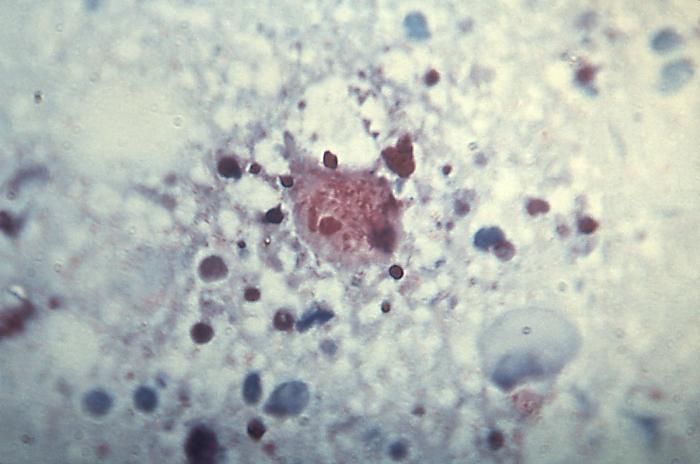
This micrograph reveals the presence of intracellular Rocky Mountain spotted fever bacteria, Rickettsia rickettsii. Spotted fever group rickettsiae can grow in the nucleus or in the cytoplasm of the host cell. Once inside the host the rickettsiae multiply, resulting in damage and death of these cells.
Photo and text courtesy of the CDC - http://www.lib.uiowa.edu/hardin/md/cdc/rockyfever.html
The innate immune system involves the early phases of immune system response to the pathogen. This response is present at all times, doesn't increase with repeated exposure to the pathogen, and discriminates between similar groups of foreign invaders. (Janeway et al., 2005) In an infection by R. rickettsii, the bacteria are often able to avoid the attacking mechanisms of the innate immune system. They are able to do this by a variety of mechanisms. One such mechanism involves the activation of the transcription factors of the NFkB pathway in order to inhibit the host cell's apoptosis mechanisms so that the bacteria are able to successfully reproduce within the cells. To read more information about how the host cell evades the innate immune response, see Evasion of Immune System Detection.
When the bacteria enter the cell through phagosomes, they lyse the membrane in order to avoid the lysosomal enzymes. If the bacteria were unable to evade the lysosome-phagosome fusion process, then the lysosomal enzymes would digest and degrade the bacteria so that it was no longer functional and could not infect other cells. However, because R. rickettsii are able to enter the cytoplasm, the innate immune system does initiate the release of natural killer (NK) cells as effectors in order to fight off the infection. These cells secrete IFN-gamma very early on in the infection. (Walker, 2003)
Based on a study by Walker and Henderson, the classical complement cascade in not necessary for the disease process. In their study of guinea pigs, the infected animals were deficient in C4 of the complement system, which is an essential part of the classical pathway. However, this study could not rule out the alternative complement pathway. Another study showed the minimal depletion of total hemolytic complement in infected pigs throughout infection. Therefore, the absence of change in complement levels continues to support evidence against an immune-complex mediated response (the complement cascade). (Walker et al., 1977)